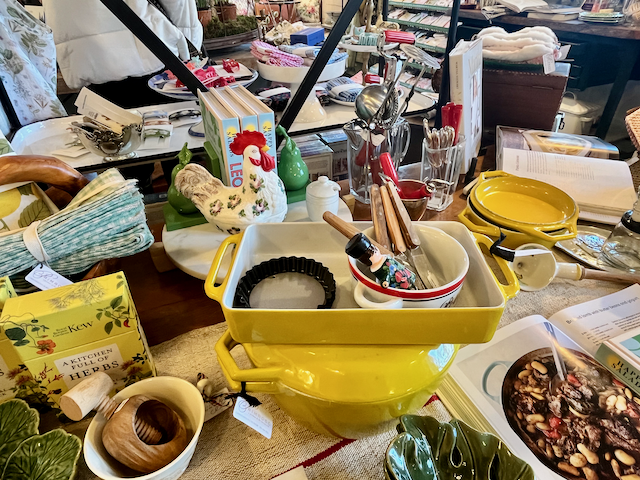Make ASD Market Week your go to place to meet with wholesalers and liquidators, attend our next show in Las Vegas. Register Today!
You’ve probably heard the term “liquidation” but might not know exactly what it means. In the retail world, liquidation is all about selling off goods and assets to pay off debts. Liquidation companies buy these items at a discount and then resell them to the public, often dealing in brand-name products from well-known companies. This method of making money is gaining popularity, and many people are considering starting their own retail liquidation businesses. Let’s dive into the essential steps and considerations for launching your successful retail liquidation business.
Understanding Retail Liquidation
Retail liquidation involves purchasing excess inventory, returned items, or assets from companies at a reduced price and reselling them for a profit. This business model thrives on the discounted prices of liquidated goods, allowing for substantial profit margins. According to industry reports, the global liquidation market is projected to grow at a rate of 7.5% year over year.
3 Key Steps to Starting Your Own Retail Liquidation Business
- 1.Secure Startup Capital: First things first, figure out how much money you can commit to your new venture. You don’t need a huge initial investment, but having enough funds to purchase your first batch of inventory is crucial. Startup costs for a retail liquidation business can range from $10,000 to $50,000, depending on the scale of your business.
- Identify Reliable Sources for Inventory: Finding a trustworthy liquidation wholesaler is key. You can purchase return pallets from major retailers like Walmart, Target, Macy’s, and Home Depot through their private liquidation marketplaces. Many of these platforms operate on an auction basis, allowing you to bid on overstock, liquidation inventory, and returned items. To buy from these sources, you’ll need a resale certificate, which exempts you from paying sales tax on items intended for resale. You can also find liquidation wholesalers at ASD and purchase by the pallet directly from them.
- Decide on Your Sales Channels: Once you have your inventory, it’s time to decide where you’ll sell your goods. Online platforms and marketplaces like eBay, Target, Walmart, and Amazon are popular choices due to their extensive reach and ease of use. If you prefer a local approach, consider setting up a brick-and-mortar store, selling at flea markets, or partnering with thrift shops.
ASD offers one of the most comprehensive marketplaces for liquidated merchandise in all categories, register for our show.
Getting Started in Online Merchandise Liquidation
With the rise of e-commerce, online merchandise liquidation has become an increasingly popular and lucrative option. Here’s how to get started:
Choose Your Online Platforms
Select the right online marketplaces for your business. Popular options include:
- Amazon: Offers a vast customer base and fulfillment services through FBA (Fulfillment by Amazon).
- eBay: Great for individual item listings and auction-style sales.
- Shopify: Allows you to create your own branded online store.
- Facebook Marketplace: Ideal for local sales and building a community presence.
Set Up Your Online Presence
- Create professional seller accounts on your chosen platforms.
- Develop a compelling brand story and consistent branding across all channels.
- Take high-quality photos of your products to attract potential buyers.
Master Online Inventory Management
- Implement an inventory management system to track your stock across multiple platforms.
- Use software tools like Skai or Sellbrite to automate listings and sync inventory.
Optimize Your Listings
- Write detailed, keyword-rich product descriptions to improve search visibility.
- Use competitive pricing strategies, considering factors like shipping costs and platform fees.
- Offer excellent customer service to build positive reviews and repeat customers.
Leverage Social Media
- Use platforms like Instagram and Pinterest to showcase your products visually.
- Engage with potential customers through social media to build brand awareness and drive traffic to your online stores.
Consider Dropshipping
- Partner with liquidation wholesalers who offer dropshipping services to reduce initial inventory costs and storage needs.
- This allows you to list products without holding inventory, shipping directly from the wholesaler to the customer.
Tips for Maximizing Profit
To make sure your retail liquidation business is profitable, follow these friendly tips:
- Create a Detailed Business Plan: Outline all potential costs, including inventory, shipping, labor, and equipment.
- Conduct Market Research: Get to know your target market and tailor your marketing strategies accordingly.
- Stay Educated: Familiarize yourself with the selling platforms, processes, rules, and fees.
- Research Competitors: Knowing your competition helps you stay competitive and move your inventory faster.
- Provide Excellent Customer Service: Good reviews and customer satisfaction lead to repeat business and a strong reputation.
- Understand Condition Codes: Different retailers use various condition codes for their products; knowing these helps you make informed bids.
- Plan for Shipping: Factor in shipping costs and logistics for both acquiring and delivering goods.
Liquidation vs. Wholesale
While liquidation and wholesale are similar, they have distinct differences. Wholesale involves selling products to businesses or resellers at a fixed price and in varying quantities. In contrast, liquidation often involves selling overstock or obsolete goods at discounted prices, typically when a business needs to generate cash quickly.
Conclusion
Starting a retail liquidation business might seem a bit daunting at first, but with careful planning and execution, it can be a very profitable retail business venture. Begin by securing your resale certificate and purchasing your initial inventory, then gradually build your business by understanding the market, providing excellent customer service, and staying competitive. By incorporating online channels into your liquidation business strategy, you can significantly expand your reach and potential for growth. Remember to stay adaptable, continually educate yourself on market trends, and always prioritize customer satisfaction. With dedication and smart business practices, your retail liquidation business can thrive in both physical and digital marketplaces.
Make ASD Market Week your go to place to meet with wholesalers and liquidators, attend our next show in Las Vegas. Register Today!







0 Comments